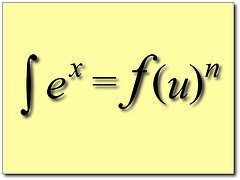You and Your Violin Bow – It’s Just Elementary Physics

You know that, as your violin skills and passion grow, your violin bow should “grow” along with them. You bought your first bow mostly for durability-mistake-proofing and protection against accidents. If your teacher and tutors counseled you wisely, you probably bought an all-synthetic bow for your first instruction and initiation into the subtleties and intricacies of the violin. If they continue to counsel you wisely, your teacher and tutors told you to keep that very first bow as a back-up; you will value your first bow’s super-powers when your better bow breaks in the middle of a big performance.
You and your bow evolve together
To some extent, your violin bow will change size and weight according to your proportions; when you grow up, you will need a big boys’ bow. Most of all, though, the materials and construction will change, keeping pace with your power and speed, adapting to your style of play. Of course, the bow is only as good as the player who draws it across the violin strings. But, as you perfect your skills and develop your repertoire, growing more confident and aggressive, a truly fine bow will make your ordinary, every day play sound considerably better. Your last and favourite bow will help you show just how good you really are.
An aesthetic and environmental debate currently rages among professional violinists. Synthetic carbon-graphite bows have become sophisticated enough to rival the sound of all-natural bows; and because the best all-natural elements in an old-fashioned bow come from the delicate Amazon rain forest, synthetic-bow advocates insist man-made sticks represent the wisest artistic choice and the most responsible let’s-go-green decision. As you take a stand in this debate, be careful not to think too much; focus, instead, on feeling. Searching and shopping for your ideal bow, make your bowing arm and fingers extra sensitive, because you will know your ideal choice the moment you feel it. Synthetic or natural, you simply will feel it, and it will feel perfect-like you and the bow were made for one another.
Rosin remains your very best friend.
From the very first moment you pick-up your very first bow, you will understand how rosin is your friend. Watch a pitcher on the mound: he steps off the rubber, walks to the back of the mound, picks-up the porous little bag, and profusely rosins his pitching hand. No rosin, no curve ball. Watch an Olympic gymnast on the uneven parallel bars: even the best leotard looks a little more competitive covered with rosin. No rosin, no catch on the bar-to-bar double-twisting somersaults. Same with a professional billiards player; You get the idea.
Hypothetically, you might apply too much rosin to your bow. In the real world, the experts agree you cannot rosin your bow too much. Even with your very best, most sophisticated and high-tech bow, liberal applications of rosin will improve its performance and your own.
It’s all about physics, you know.
Your last and favourite violin bow, properly rosined and ready to go, has two special properties to optimize your sound. Both properties, however, derive from one basic principle-friction. Your bow draws sound from your violin by creating friction against the strings; the greater the friction, the better the tone. Although you probably did not think about it at the time, you learned this essential principle the very first time you picked up and played with your instrument: the harder you pressed the bow against the strings, the more voluble its tone became. Greater friction. The further down the bow you play the strings, the stronger your tone becomes. More weight and slightly greater string-surface area create more friction; and larger size gives more amplitude-bigger notes.
When you invest in a really good bow, and when you rosin the fine bow’s strings to perfection, you generate optimal friction. Optimal friction equals fine tone equals great play. Now, really, how hard can that be?
Hailey Alton is a violin performer, music lover and teacher. For more great tips on the best Bow for your Violin please visit http://learntheviolinfast.com/
